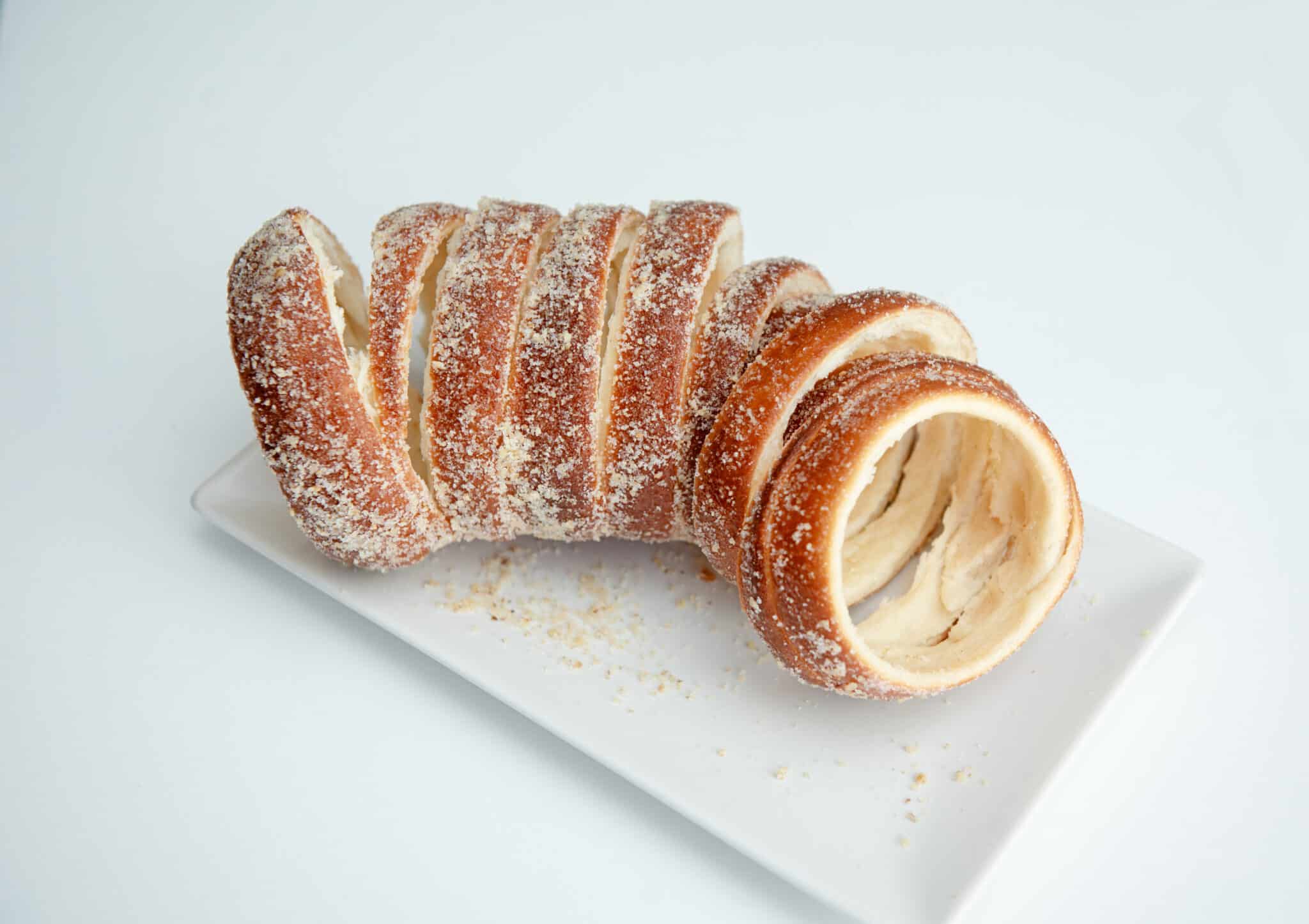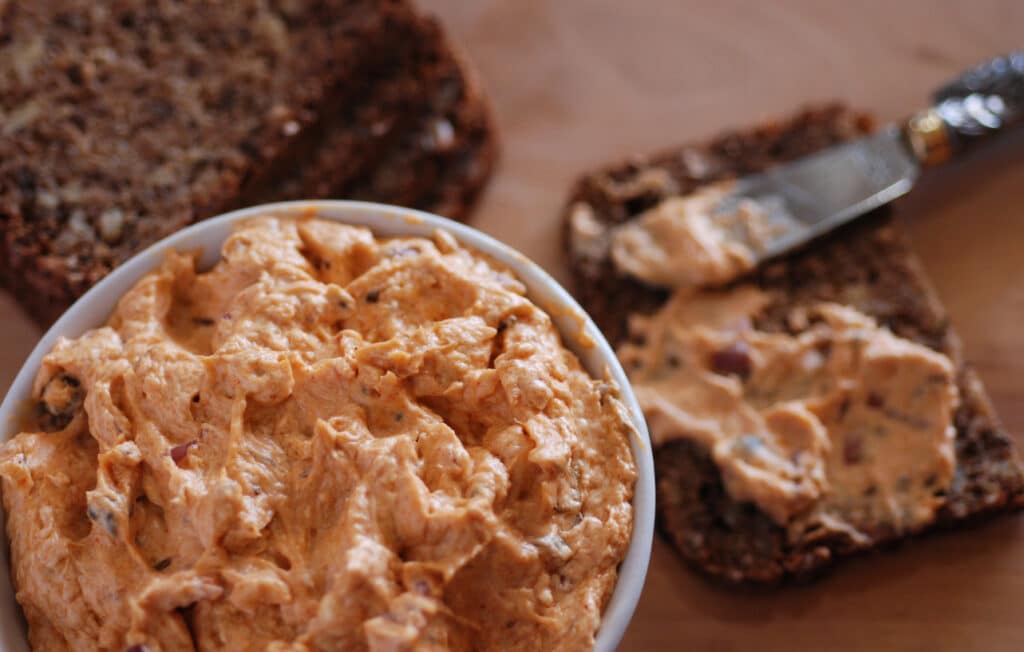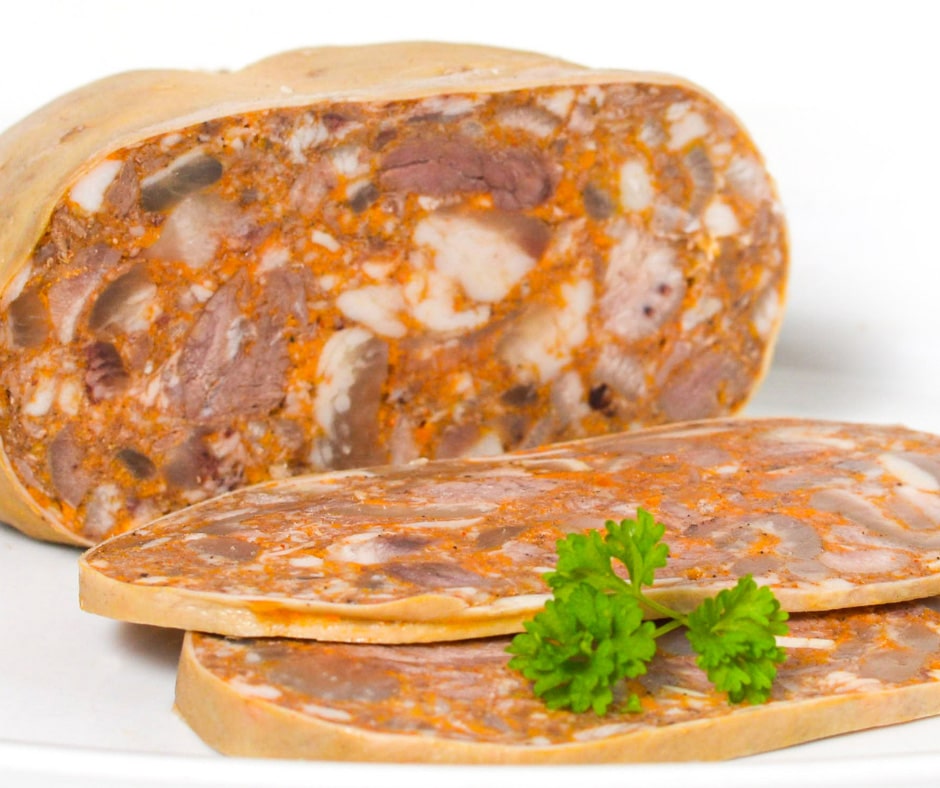Kürtőskalács: Hungary’s Spiralling Sweet Treat
Chimney cake (also known as kürtöskalács) is a very popular sweet pastry not only in Hungary but also in Transylvania, Romania, Slovakia, Germany, and Poland. Even though, obviously, every one of these nations considers this sugary delicacy to be its own, kürtőskalács has been officially registered as a Hungaricum since 3 December 2015.
Origins Rooted in Tradition
The chimney cake’s story begins in Székely Land, a Hungarian-speaking region of Transylvania, now part of Romania. The name “kürtőskalács” comes from the Hungarian word “kürtő”, meaning “chimney” or “stovepipe”, and “kalács”, meaning “sweet bread”. Its tubular shape and the steam rising from its hollow centre evoke the image of a smoking chimney, giving the cake’s name.
One of the first recipes for chimney cake can be found in a Transylvanian recipe book, written by Countess Mária Mikes of Zabola in 1784. According to legend, the origins of the cake can be traced even further back, recalling a story where Széley women baked hollow bread on spits during the Mongol invasion of 1241, deceiving the invaders into believing they had ample food supplies. The Mongols, believing the villagers were well-stocked, abandoned the siege. Whether myth or truth, the story adds a layer of folklore to this beloved pastry.
By the end of the 18th century, the cake gained currency all around the Hungarian-speaking area and became a significant food both among the nobles and the plebs. In the 19th and 20th centuries, the recipe for chimney cake got into numerous popular Hungarian recipe books, and since the beginning of the 20th century, the cake has been covered with sugar and flavoured with walnuts.
How It’s Made
Kürtőskalács is crafted from a sweet yeast dough, rolled into long strips and spiralled around a wooden or metal spit. It’s then basted with melted butter, rolled in granulated sugar, and roasted over charcoal or baked in an oven. As it turns into a crisp, glossy crust, the sugar caramelises. Once golden brown, it’s often coated with toppings like cinnamon, ground walnuts, coconut, or cocoa powder. The result? This results in a pastry that is crispy on the outside, soft and fluffy on the inside, and perfect for sharing or scoffing it alone.
Variants Across Borders
Although kürtőskalács is distinctly Hungarian, it has gained popularity across Central and Eastern Europe, leading to the creation of regional variations. In Romania, it is called “cozonac secuiesc” and is often served at fairs and festivals. In Slovakia and the Czech Republic, it is called “trdelník” and lacks the caramelised sugar glaze. In Germany, it is called “baumstriezel”, while in Poland, it is called “kurtoszkalacz” or “węgierski kołacz” and uses the Hungarian name. Modern adaptations include chimney cones filled with ice cream or cream, turning the traditional treat into a trendy dessert hybrid.
Becoming a Hungaricum
In December 2015, kürtőskalács was officially declared a Hungaricum – a designation reserved for uniquely Hungarian products that reflect the nation’s heritage. The Hungaricum Committee recognised the pastry not only for its culinary value but also for its cultural significance, especially in Transylvania, where it serves as a symbol of Hungarian identity.
From Festive Treat to Global Star
Originally reserved for weddings and holidays, kürtőskalács is now a year-round street food found in Budapest’s markets, Transylvanian towns, and even food trucks in New York and Tokyo. Its visual appeal, aromatic charm, and interactive preparation make it a beloved favourite anywhere around the world.
Vocabulary
| Transylvania | Erdély |
| even though | annak ellenére, hogy |
| obviously | Nyilvánvalóan |
| delicacy | ínyencség |
| to be registered as | nyilvántartásba venni |
| officially | hivatalosan |
| tubular shape | csőszerű forma |
| hollow | üreges |
| according to legend | a legenda szerint |
| to be traced back | visszavezetve lenni |
| to deceive sb into | megtéveszteni valakit, hogy |
| invader | megszálló, támadó |
| ample | bőséges |
| food supplies | élelmiszerkészlet |
| well-stocked | jól ellátott |
| to abandon | elhagyni |
| siege | ostrom (hely) |
| to gain currency | elterjedtté válni |
| yeast dough | kelt tészta |
| to baste with | lekenni valamivel |
| charcoal | faszén |
| topping | feltét |
| to scoff something | gyorsan befalni valamit |
| to be declared | kihirdetve lenni |
| designation | megjelölés, kijelölés |
| reserved for | fenntartva valaki/valami számára |
| heritage | örökség |
| culinary value | gasztronómiai érték |









